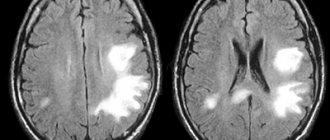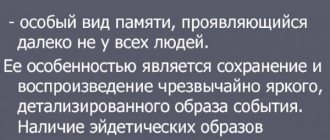Hypomania is a deviation in human behavior, expressed in prolonged hyperactivity. This mild form of mania is also considered a mental disorder. Main symptoms of the syndrome:
- excessive talkativeness;
- excessive social activity;
- obsessive professional activity;
- inadequacy of judgment.
Hypomania is understood as a mild degree of mania, in which changes in mood and behavior are long-term and pronounced, and are not accompanied by delusions and hallucinations. Elevated mood manifests itself in the sphere of emotions as joyful calmness, irritability, in the sphere of speech as increased talkativeness with relief and superficial judgments, increased contact. In the sphere of behavior, there is an increase in appetite, sexuality, distractibility, a decrease in the need for sleep, and certain actions that violate moral boundaries. Subjectively, ease of associations, increased performance and creative productivity are felt. Objectively, the number of social contacts and success increase.
Hypomania
Hypomania can be hidden and obvious, the so-called pure. Both types of the syndrome have their own additional signs and causes, which are taken into account when determining the treatment strategy. Basic complex therapy includes medication and psychotherapeutic sessions.
Causes of hypomania
If time pressure arises at work (lack of time to think about a decision), it is quite understandable that a person may become hyperactive. Sometimes there really is a need to “give it your all” in order to complete a project on time. But when work is completed, the natural reaction is to sleep and rest to replenish lost energy right away. This behavior is normal.
It’s another matter when a person cannot “slow down”, relax and switch his attention to rest. The energy becomes uncontrollable, like an overclocked train. This feature of the nervous system easily develops into a disorder called “hypomania.”
A common cause of emotional and mental overexcitement, which provokes hypomania, is the abuse of stimulants:
- strong tea and coffee (many cups a day);
- energy drinks;
- medications that stimulate brain activity.
Hypomania can also have causes in hormonal disorders. For example, hyperthyroidism (thyroid pathology), menopause or postpartum syndrome. Dysfunctions in the hormonal system are usually accompanied by low-grade fever (prolonged increase in body temperature within 37-38 degrees Celsius).
In some cases, hyperactivity occurs some time after food irritation, anorexia (refusal of food) or fasting.
Emotional overexcitement combined with hyperactivity can be provoked by uncontrolled use of potent medications, not to mention narcotic substances.
Disease prevention
The best insurance against the occurrence of such mental disorders is adequate upbringing of the child in childhood.
It is important for modern parents to remember that not only victories in life and a dizzying career will bring happiness to their child. When cultivating in a child hard work and the desire to achieve a lot in the profession and society, it is important not to overdo it, but to teach him to also value moral, ethical and family values, a healthy lifestyle, and to fully combine the activities of mind and body
It is much more difficult for an adult hypomaniac to re-educate himself, but it is possible. The main thing is that a person realizes the harmfulness of his own behavior and lifestyle and sincerely wants to change. And of course, timely contact with a psychiatrist and psychotherapist plays an important role, who will help the patient return to a normal lifestyle.
Symptoms of hypomania
Among the many signs of hypomania is a mood indicator. It is either elevated, or the person is in an irritated state, which is unusual for a given individual, and lasts for several days. Also, in order to assume that a person is suffering from hypomania, the following symptoms must be identified. For example, the individual must be overly active and show signs of physical restlessness. He has increased talkativeness, has difficulty focusing his attention on something specific, and is physically restless. Such a person does not need long sleep, his sexual energy does not know fatigue. In addition, there may be manifestations of irresponsible behavior bordering on recklessness. When communicating with people, a person is overly familiar.
Symptoms
There are three main symptoms of hypomania: hyperactivity, sudden mood swings, and excessive irritability. However, depending on the severity of the symptoms, hidden and overt (pure) hypomania are distinguished, which have additional, more extensive symptoms.
Pure (obvious) hypomania
Pure hypomania is characterized by pronounced symptoms and outbursts of aggression.
- Dispersion. Such people are distracted by noises, conversations, and find it difficult to think about one thing. Due to the inability to concentrate on a task, attacks of rage occur.
- Increased need for communication. Despite their intolerance towards society, the desire for communication among such people is very high.
- Perfectionism. The desire to do all the work perfectly and in the shortest possible time takes away people’s strength and leads to insomnia.
- Heightened self-esteem. Any criticism is unacceptable for people with hypomania; they are confident in their ideality and uniqueness.
Hidden hypomania
The symptoms of latent hypomania are similar to pure hypomania, the difference being the absence of aggression and irritability. Also, signs of hidden hypomania include naivety and high spirits. It’s as if they live with rose-colored glasses: they don’t notice problems, nothing can upset them.
Symptoms of hypomania
Behavior of a person suffering from hypomania
It can be said that patients with hypomania behave in much the same way as individuals with mania. The defense mechanism in their behavior is the constant idealization of their own person. In addition, such people completely deny everything negative that has to do with their behavior and activities. Sometimes there are hypomanic fantasies in which a person with hypomania considers himself irresistible and a particularly outstanding character. But the difference is that, compared to mania, with hypomania there is no all-consuming nature of fantasies, and there is no one-sided impact on a person’s thinking and actions.
Clinical example: Patient O., 32 years old. By nature he is sociable and active, by profession he is an employee of a small company. Over the last week I have been sleeping less due to the fact that I was implementing a new project at my job. He believed that everyone at home was bothering him, so he had to work at night. He was detained by the police at night due to the fact that he was riding roller skates at high speed along the central streets, loudly singing songs. A few days later he came into conflict with the restaurant staff when, as he believed, he was served an incorrectly prepared dish. He got into arguments with everyone at work because he believed that “his ideas are the most advanced.”
Course of manic episodes: classification of bipolar disorder by severity
Depending on the severity of manic symptoms, there are two types of bipolar disorder and one similar disease, characterized by a less severe course.
BAR I type
This is a “standard”, which is characterized by pronounced manic phases (“real” manias) and psychoses. The manic phase is expressed in:
- hyperthymia - an extremely high mood for no reason;
- increased physical activity;
- ideational-psychic excitement.
In full-blown mania, patients eat and sleep very little, and their thoughts quickly follow one another, becoming fragmentary. Frequent signs are motor restlessness (agitation), confusion of speech that cannot keep up with thought.
Symptoms of mania in patients appear gradually, reaching a peak as they develop, and just as gradually (usually more quickly) subside. After the signs of mania disappear, intermission may occur, but often the person finds himself in a depressed state.
Mania is dangerous. An elevated mood combined with strong ideational arousal leads to serious consequences that can affect the rest of a person’s life. Sometimes patients:
- spend all their money (sometimes whole fortunes!) on unnecessary things, casinos or even charity;
- quitting their job “to nowhere”;
- impulsively get divorced or married, lose friends;
- lose intelligibility in sexual relations;
- go on crazy trips and much more.
A manic person appears to be possessed and may exhibit delusions, grandiosity, or overvalued ideas. On the spur of the moment, he is capable of committing unreasonable acts and becomes an easy target for scammers.
Type I BAR is less common than the milder “versions.” Despite the unpleasant symptoms, type I responds well to treatment: with well-chosen drugs, the disease may not manifest itself for many years.
BAR type II
In bipolar II disorder, there are no full-blown manic phases. Instead, there are hypomanias, characterized by a less severe course. Sleep duration and appetite decrease, mood becomes steadily elevated, but all these signs are not as pronounced as in type I.
Patients experience a moderate increase in motor and mental activity, but most often there are no superideas, as well as signs of psychosis. Otherwise, the course of type II disease is identical to that of type I.
Cyclothymia
Cyclothymic disorder can be called “mild bipolar.” Patients, as a rule, maneuver between hypo- and hyperthymia - periods of depressed or elevated mood. Occasionally, hyperthymia turns into hypomania.
Significantly more people suffer from cyclothymia than bipolar disorder, but exact numbers are impossible to give. Even in severe depression, less than half of patients consult a psychiatrist, and the majority accept the mild course of the disease as a personal characteristic.
The danger of hypomania
Some people perceive the disease as a gift of fate, because the person does not want to sleep and is constantly working and communicating. All this negatively affects physical health.
An ordinary person cannot adequately evaluate his actions, he begins to overestimate his capabilities, resulting in apathy, loss of strength, and a decrease in quality of life.
Hypomania leads to chronic lack of sleep, a person cannot concentrate, his memory deteriorates, and fatigue accumulates in large quantities. When a person does not sleep and constantly works, he is drowsy and has a fog in his head.
The diet is also often disrupted; gluttony ends in obesity and vitamin deficiency. Immunity is completely reduced and the disease may worsen.
A person takes life lightly and has financial problems. Then apathy sets in, because the patient cannot pull himself together. The danger of hypomania is that it leads to serious depression. The longer the takeoff lasted, the harder it was to get out of apathy.
Due to the fact that a person perceives reality inadequately, he ceases to control situations, constantly conflicts at work, and cannot communicate with loved ones.
Hypomania is often characteristic of a creative person. Composers and writers suffer from it. First they create a masterpiece, the takeoff begins, and therefore burnout lasts a long time. Because of this, many begin to drink, use drugs, and everything ends in failure and failure.
Hypomania is dangerous because the patient wants to regain his energy, for this he uses various stimulant drugs, which negatively affect his health.
Psychotic mania (manic psychosis)
Mania can range in severity from hypomania to severe mania with psychotic symptoms.
Ideas of grandeur and heightened self-esteem can develop into delusions, and irritability and suspicion can develop into delusions of persecution. In severe cases, pronounced delusional ideas of greatness or noble origin are noted. As a result of racing thoughts and speech pressure, speech becomes incomprehensible.
| “Psychotic symptoms can be congruent with affect or incongruent. Psychotic symptoms congruent with affect are, for example, manic delusions of grandeur, of a special origin or “voice” informing the patient about his “superhuman abilities”, etc. Incongruent - may include affectively neutral hallucinations, delusions of relation without elements, delusions of meaning or persecution , “voices” talking with the patient about events that have no emotional significance, etc.” Federal clinical guidelines for the diagnosis and treatment of bipolar affective disorder in adults. Mosolov S.N., Kostyukova E.G., Tsukarzi E.E. November 2013 |
Diagnosis of hypomania
The main criteria are:
- Elevated or irritable mood that is abnormal for the individual and persists for at least 4 days.
- At least 3 symptoms from the following must be present:
- increased activity or physical restlessness;
- increased talkativeness;
- difficulty concentrating or distractibility;
- decreased need for sleep;
- increased sexual energy;
- episodes of reckless or irresponsible behavior;
- increased sociability or familiarity.
Treatment methods
Hypomania in psychology is a mood disorder that requires complex therapy. The course of treatment and regimen are selected by the attending physician, taking into account the patient’s condition and the reason behind the emotional changes.
Drug therapy involves the use of the following drugs:
| Group of drugs | Name | Application |
| Antipsychotics | Litosan, Lithobid | The dosage for an adult patient is selected taking into account the level of lithium in the blood. In most cases, the patient is prescribed 400 mg 3 times a day. |
| Anticonvulsants | Carbamazepine, Gabapentin | The medicine is taken orally with a sufficient amount of water. The adult dosage per day is 400-1600 mg, it should be divided into 2-3 doses. |
| Benzodiazipines | Clonazepam, Lorazepam | Medicines are prescribed to patients if their sleep is disturbed or insomnia bothers them. The dosage of the drug is determined by the age of the patient and is 0.25-6 mg per day. The course of treatment lasts 2-4 weeks. |
Many drugs are addictive, so it is important to strictly adhere to the instructions and be under the supervision of a doctor. In some situations, children are prescribed lithium.
Differential diagnosis
Hypomanic episodes are possible with hyperthyroidism, in this case they are combined with autonomic reactions, increased temperature, Graefe's symptom, exophthalmos, and tremor are noticeable. Patients o. Hypomania can also occur during the food arousal phase of anorexia or when fasting treatment is used. With true hypomania, on the contrary, appetite is increased. Hypomania is also characteristic of intoxication with certain psychoactive substances, such as amphetamines, alcohol, marijuana, cocaine, but in this case there are other signs of intoxication: changes in the size of the pupils, tremor, vegetative reaction.
Pathogenesis
Regardless of the cause of the development of hypomanic disorder, its manifestations include disorders of both the affective and somatopsychic spheres.
A persistent high mood is combined with an increase in overall tone, a feeling of well-being and excessive optimism. Pathologically altered affect is accompanied by a change in self-esteem towards a boastful exaggeration of one’s own merits, a conviction of one’s own infallibility and originality appears, and ideas of superiority are observed. There is no subjective critical attitude towards the disorder.
Any opposition or objection causes irritation and anger, but in most cases these signs are labile.
The pace of thinking in a person with hypomania accelerates, and speech loses expressiveness due to the fast pace. The person is unfocused, but at the same time has inexhaustible energy - such patients perform even routine work with a special emotional uplift, and also take on the implementation of many plans, without doubting their feasibility.
The patient has a special physical well-being, accompanied by a high threshold of fatigue and resistance to stress. The need for rest and sleep is reduced.
Somatopsychic signs may be dominant in the clinical picture of the disease.
Hypomania can develop within periodically repeating phases or become protracted.
During cyclothymic phases, hypomanic disorder is clearly defined in time and is characterized by a noticeable rise in mood.
The protracted course of hypomanic disorder is characterized by persistent affect. It can proceed according to the productive type, but atypical variants are also possible (presence of overvalued formations, rudimentary obsessions, depressive pain syndrome).
The relatively smooth course of hypomanic disorder can be interrupted by transient somatization disorders (vegetative crises, vital fear, asthenia, disorders of self-awareness, etc.).
Since hypomania is most often observed as part of bipolar affective disorder (BD), it is often followed by depression. Hypomania and depression can be separated by periods of even mood, but they can also alternate continuously.
In most cases, bipolar disorder has an early onset (childhood and adolescence) and a chronic course.
The course of bipolar disorder can be:
- remitting (episode – remission – episode);
- with dual phases (one episode is immediately replaced by another, opposite in polarity);
- continuous (no periods of remission between episodes).
Complete euthymic remission is observed only in some patients.
The course of the disease may become more severe over time, giving way to a more severe painful state (mania). With age, the duration of the intervals between episodes decreases.
On average, the duration of episodes ranges from 2 weeks to 2 months.
The rhythm of episodes does not depend on the individual, so patients with bipolar disorder suffer from significant instability and self-doubt. According to WHO, bipolar disorder is one of the top ten diseases that cause disability. In addition, the risk of suicide is higher in bipolar disorder than in unipolar depression.
Negative consequences
Hypomania is a phenomenon in which high mood turns into unhealthy carelessness. The thirst for performing a large number of actions reduces the duration of sleep, leading to insomnia.
Communication turns into intrusiveness and annoying people. Healthy confidence comes from self-confidence. Irritability gives way to aggression.
This syndrome poisons people's lives. Families and relationships with people are destroyed, and one’s position in society is lost. Health indicators are deteriorating.
- The development of VSD, psychosis or other mental illnesses is possible.
- Deterioration and memory loss.
- Decreased immunity, vitamin deficiency, disruption of the gastrointestinal tract.
Untreated hypomania can lead to psychosis
Features of the course in children
Not only adults face a problem such as hypomania. Some children also have this problem, which manifests itself in the following:
- impulsiveness, lack of self-control;
- antics and involuntary reproduction of various sounds;
- rudeness;
- fussiness, inconsistency of actions;
- quickly transferring attention from an object to another (one type of activity quickly gets boring);
- rapid speech (the child “swallows” half the words);
- sleep problems
Some of the above signs are also characteristic of the lives of healthy children. Increased attention should be paid if the symptoms do not stop and appear in an exaggerated form.
A sick child often grimaces and cannot concentrate










